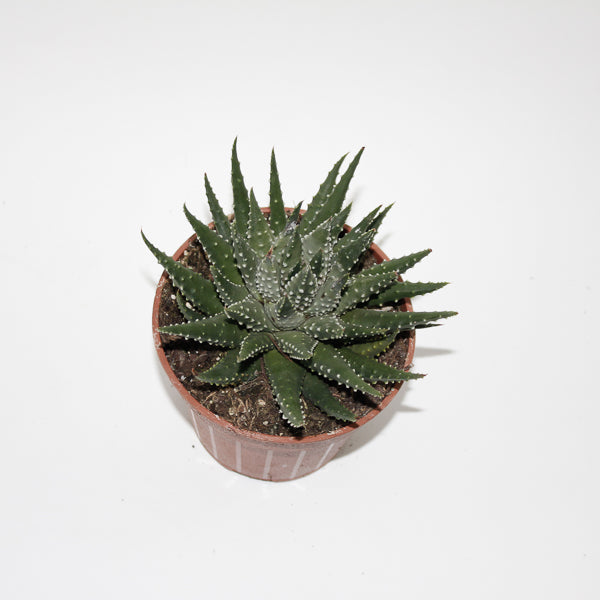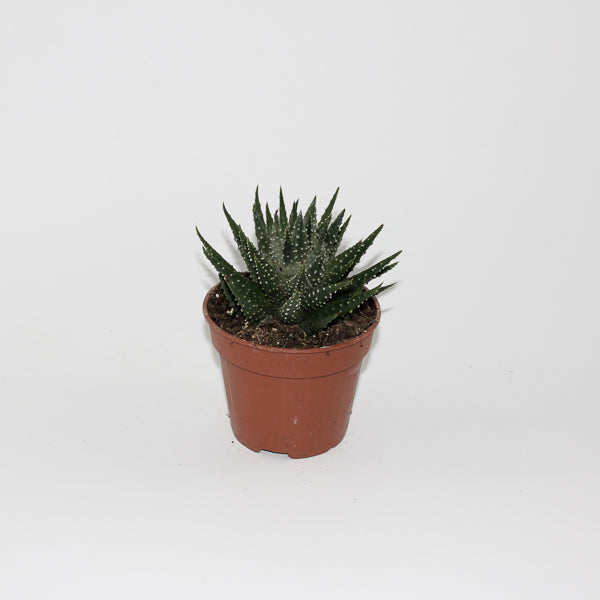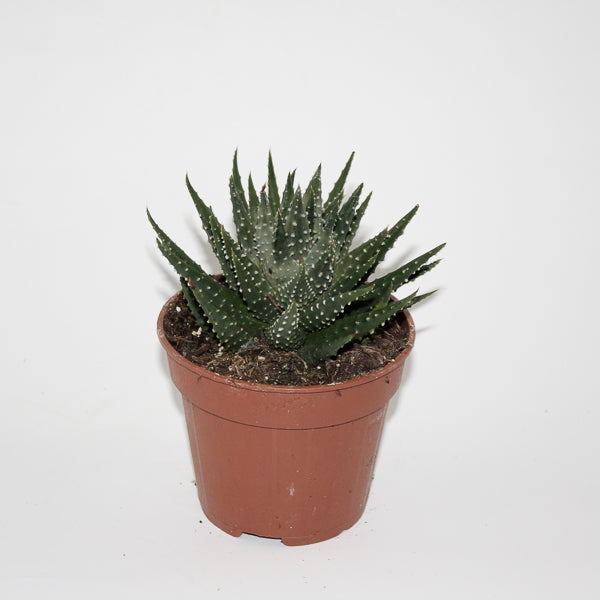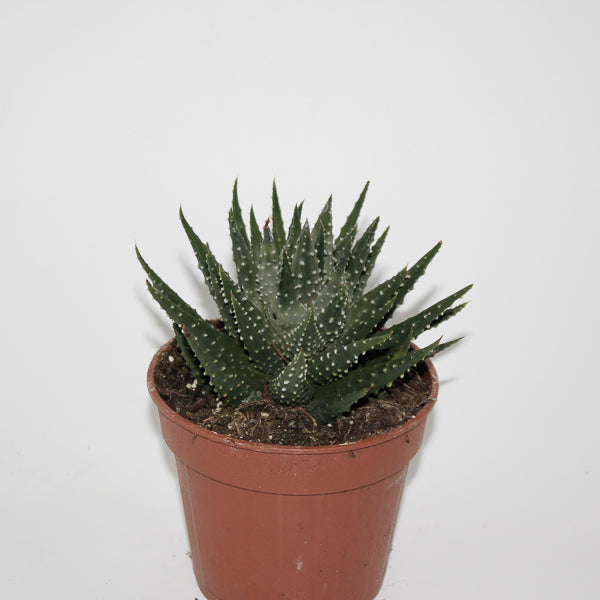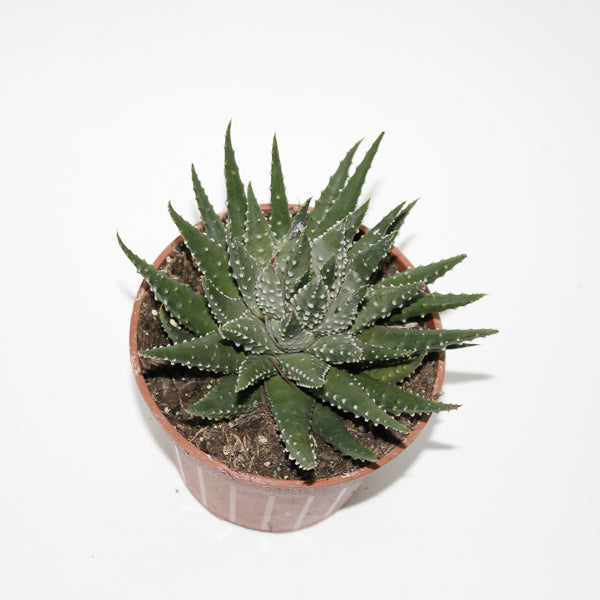1
/
of
5
Emm's Plant House
Hawthoria pumila Ø12cm
Hawthoria pumila Ø12cm
Regular price
£12.00 GBP
Regular price
Sale price
£12.00 GBP
Unit price
/
per
Taxes included.
Couldn't load pickup availability
Haworthia pumila is a small, compact succulent species native to South Africa, known for its rosette of thick, fleshy leaves that are typically dark green with white, warty tubercles. These tubercles give the plant a textured appearance, making it a striking addition to any succulent collection. It is a slow-growing plant that stays small, making it ideal for indoor containers, terrariums, or as a decorative accent in succulent arrangements. In spring, it may produce small white flowers on a long stem, adding a subtle touch of elegance to its already appealing form.
- Full Botanical Name: Haworthia pumila
- Common Names: Dwarf Haworthia, Miniature Haworthia
- Country and/or Region of Origin: Native to South Africa
- Growing Conditions in Native Habitat: Grows in dry, rocky soils in arid climates, often found in semi-desert environments with minimal rainfall and full sun exposure
Care Guide
Care Guide
Share
